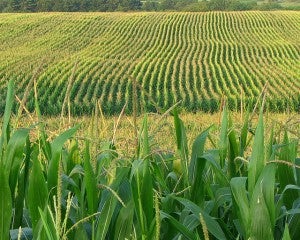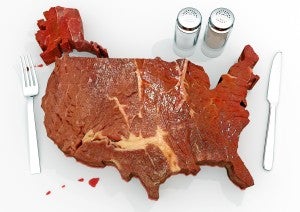 The Paris Climate Agreement included a special emphasis on food security and the threats it faces from extreme weather events. Despite only brief mentions of agriculture in the preamble to the agreement itself, a recent study from the University of Vermont reveals that global emissions reduction targets absolutely cannot be met without significant contributions from the agricultural sector.
The Paris Climate Agreement included a special emphasis on food security and the threats it faces from extreme weather events. Despite only brief mentions of agriculture in the preamble to the agreement itself, a recent study from the University of Vermont reveals that global emissions reduction targets absolutely cannot be met without significant contributions from the agricultural sector.
According to this new research in Global Change Biology, agriculture needs to reduce emissions by one gigaton per year in 2030, yet current mitigation strategies can only meet 40 percent of this target, at most, and may deliver as little as 21 percent of what is needed.
The authors argue that agriculture needs to play its part, and I couldn’t agree more. We are dependent on agriculture not only to keep us fed, but also to lead the way in addressing climate change threats. Agriculture represents approximately 9 percent of total emissions in the U.S., and between 10 to 29 percent of emissions globally, though this figure is projected to increase.
Despite the fact that 119 nations included agricultural mitigation as an in-country strategy for meeting the Paris Agreement reduction targets, no country has yet reported on how to accomplish these pledges.
Ultimately, the responsibility to implement tangible on-farm changes that reduce emissions falls on billions of farmers, but there is an even greater responsibility for animal agriculture companies. Here’s why – and what these companies can do to help tackle the climate challenge.
Animal feed’s impacts
 Although figures vary widely, some experts believe emissions from livestock account for nearly 80 percent of all agricultural emissions.
Although figures vary widely, some experts believe emissions from livestock account for nearly 80 percent of all agricultural emissions.
A substantial part of this footprint comes from feeding those animals. The livestock, dairy, poultry and pork sectors consume 40 percent of U.S. corn, which has significant environmental impacts because grain production relies heavily on fertilizer. But, in a given year only 40 percent of nutrients applied are taken up by crops. The unused fertilizer is at significant risk of being lost as nitrous oxide, a greenhouse gas nearly 300 times more powerful than CO2, or as nitrates that can pollute drinking water or create toxic algal blooms.
Many advocate for plant-based diets over animal protein as a way to reduce emissions. But no matter our food preferences, the reality is that beef and poultry consumption are growing 1.3 and 1.2 percent each year, respectively. As incomes rise and urbanization increases, diets are shifting to more consumption of meat, poultry and dairy, not less. While the carbon intensity of livestock production has been decreasing over the last several decades, the absolute emissions are increasing. The bottom line is that we need to make animal agriculture much more sustainable than it is now, and to do so at a very large scale.
The good news
 There are some immediate steps animal agriculture companies can take to make feed grain production more sustainable – and thereby reduce emissions.
There are some immediate steps animal agriculture companies can take to make feed grain production more sustainable – and thereby reduce emissions.
By helping farmers optimize the use of fertilizer, improve soil health and plant cover crops, these companies can immediately reduce emissions in their supply chain and help growers improve yield. Smithfield Foods is doing just that in Virginia, North Carolina, and South Carolina through a program called MBGro that provides free agronomic, fertilizer application and sustainability advice to regional grain farmers. Smithfield is also deploying a sustainability program called SUSTAIN, developed by agricultural wholesaler United Suppliers and implemented by its network of independent retailers, in their Midwest operations.
Innovations
The University of Vermont study also highlights innovations on the horizon that could further accelerate progress. Examples include mechanisms to reduce methane emissions from dairy cows without compromising milk yield; sustainable intensification of cattle; new wheat and corn varieties that inhibit nitrous oxide emissions; and soil management approaches that increase the stability of soil organic matter to improve carbon retention.
Of course, even with these immediate opportunities, we have a very long way to go to reduce environmental impacts from animal agriculture, both from feed grains and from manure management. There is no silver bullet. We need all hands on deck and investments from all sectors to design and implement solutions that enable agriculture to be part of the solution. Changes won’t happen overnight, but now there is a new sense of urgency for animal agriculture to get on board – and new opportunities to make it happen.
Related Content
A newly re-energized sustainable ag movement >>
Want to bring ag sustainability to scale collaboration, not confrontation >>
Organic or conventional. Which production system can feed the world sustainably?>>









